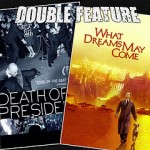Some have suggested that heaven and hell exist inside our minds – that they’re mental states of our own construction. In What Dreams May Come, a suicide victim plummets to the depths of an inescapable abyss. She’s surrounded by everything that’s dark, oppressive, and sad.
This is the experience of PTSD. Jarring events can narrow one’s focus,to where an obsession with peril is all that’s left. Such a stance can result in paralyzing inaction, and a paranoiac analyzing of trivial things. Sufferers of PTSD are engaged in a constant mental calculus to ascertain signs of danger.
PTSD can be instigated by bullies – uncivil people who wear behavioral blinders, and who destroy people’s reputations. Incivility is then inconsiderate encroachment. It is the failure to consider how your activities impact those around you, and/or the absence of a priori communication which could prevent an impasse. One of the best books that I’ve read on this topic is “Choosing Civility.” In it, Forni suggests methods of handling interactions (e.g., contacting customer service, initiating a construction project,instigating a complaint). In some cases it’s simply a matter of alerting people of your intentions, and discussing them in sufficient detail so that there are no surprises.
Arrogantly bulldozing through life is a tactic of the self-absorbed (and a recipe for disaster). Blustering souls exist both in personal life and at work. Supervision that is heavy handed, reactions that are excessive and unnecessary, and coworkers who use you as their personal grindstone all set the stage for the onset of mental disorder.
If your office is a place you avoid, more emphasis on people management is necessary. In The Cost of Bad Behavior: How Incivility is Damaging Your Business and What to do about it, Pearson and Porath showcase firms that have not only improved their culture, but have increased their profits through initiating human resource best practices. These organizations demonstrate that sustainable management and corporate survival are the product of a “people first” strategy; one in which worker happiness is seen as the driver of company earnings.





Recent Comments